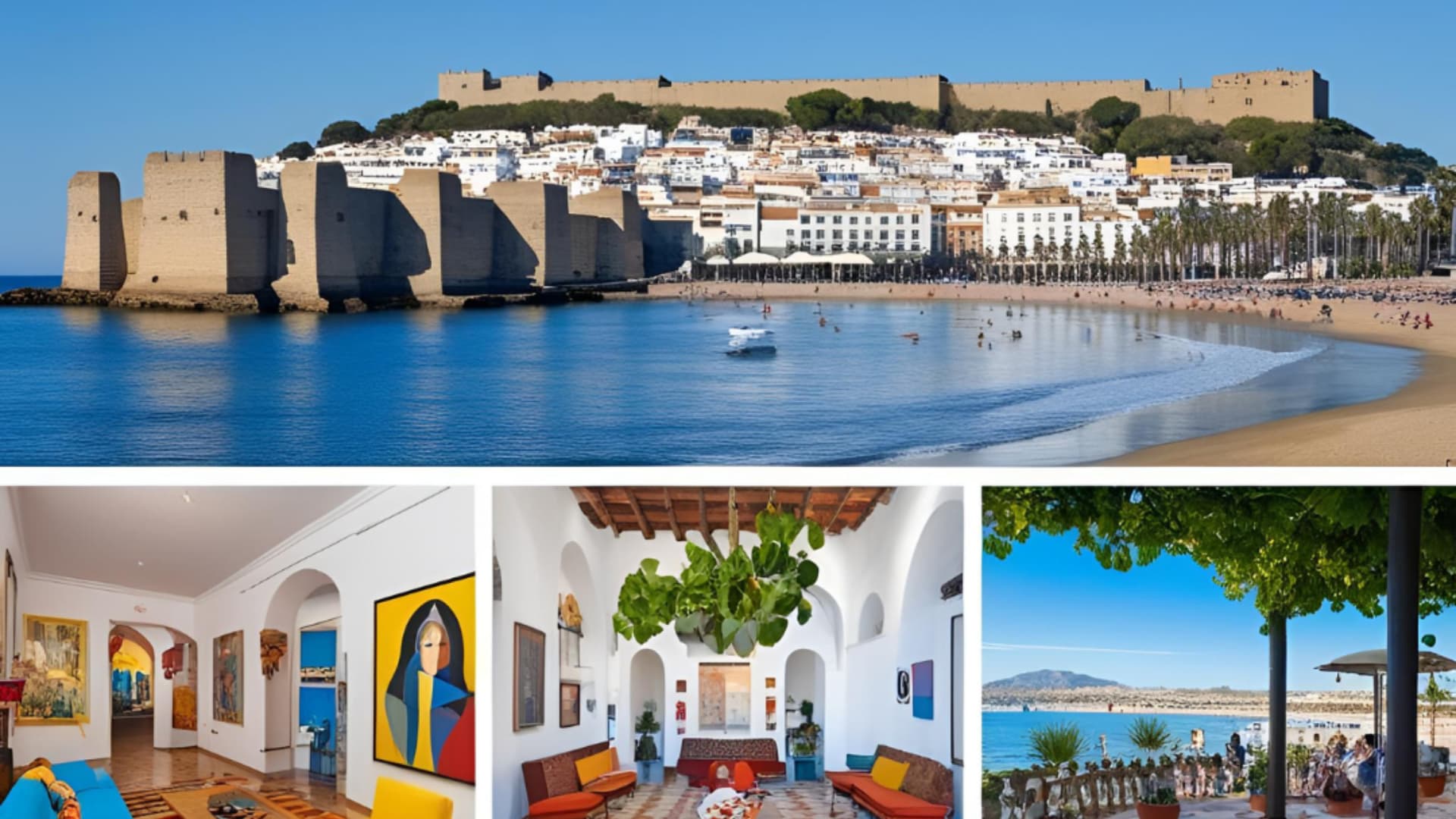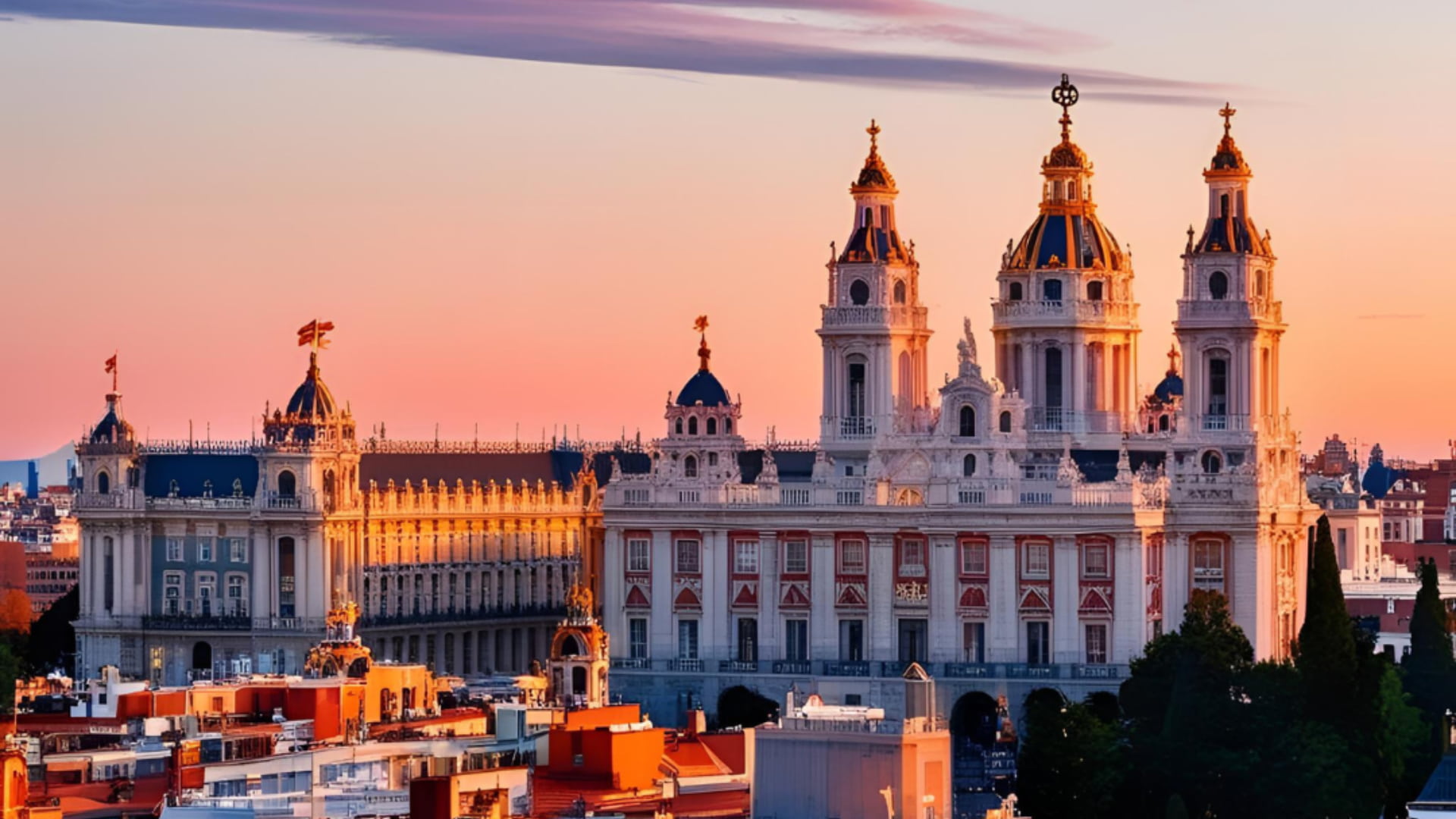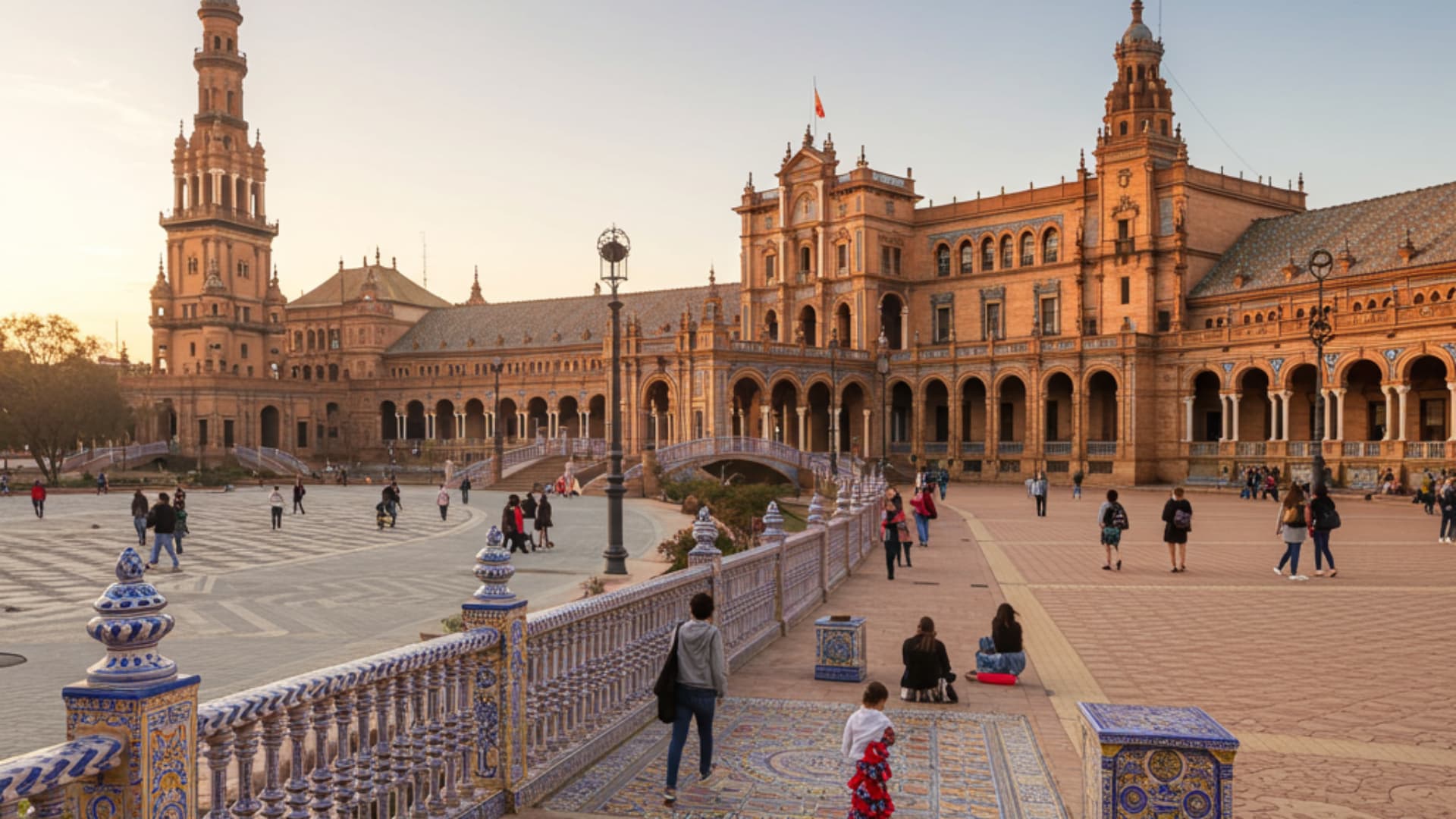So, you’re thinking about heading to Spain? That’s awesome! Spain is amazing, but with so much to see, it can be tough to figure out how to fit everything into a short trip. That’s where a smart Spain Itinerary comes in—it helps you see the best without feeling overwhelmed.
I had just learned about Barcelona and Madrid when I first visited Spain. So, yes, those were the only places I went. I’ve put together this 9 day Spain itinerary that not only hits the big cities like Barcelona and Madrid, but also shows you some places that are just as (if not more) amazing—like Seville, Granada, and Córdoba. Trust me, you’ll leave Spain with more than just the basics!
Now, full disclosure: This guide is super detailed. It’s like, “Whoa, how much time did you spend writing all this?!” But hear me out—this isn’t your typical “two nights here, one night there” itinerary. I’m giving you the good stuff: what to do in each city, how to get around, and even tips on saving some cash.
So yeah, it’s a bit of a long read, but I promise it’s worth it! Whenever you’re ready, please sit back, relax, and let’s start planning your perfect Spain adventure!
If you’re heading to Spain for the first time, Barcelona has to be on your list. It’s one of the most popular places to visit in the whole country. I mean, it’s got fabulous beaches, cool palm trees, and beautiful buildings that look like they’re from a fairytale—especially the ones designed by Gaudí (you’ll know them when you see them!).
Plus, if you love soccer, you’ve probably heard of FC Barcelona—one of the biggest football clubs in the world.
If you’re starting your trip in Barcelona like I did, you’ll fly into the city. The main airport is called Josep Tarradellas Barcelona-El Prat Airport (BCN). Once you land, you’ve got three easy ways to get into the city:
This is what I used! The Aerobus takes you straight from the airport to a big square called Plaça de Catalunya in the city center. It runs every 5 minutes during busy times and takes about 30 minutes. It costs around €7.45 one way or €12.85 roundtrip. Once in the city, you can walk to your hotel or hop on the Metro (the subway).
Another way to get to the city is by train. Look for the Renfe train station at the airport. (If you land at Terminal 1, there’s a free shuttle bus to Terminal 2, where the train station is.) The R2 Nord line will take you to stops like Barcelona-Sants and Passeig de Gràcia. Trains run every 30 minutes, take about 25 minutes, and cost around €5.50. You can also get a T-Casual 10-ride ticket for just €12.55, which saves you money if you plan on using public transport a lot.
Grab a taxi outside the terminal if you want the easiest and most direct way. They’re the yellow-and-black cars lined up after arrivals. The ride costs about €25 to €30 and can take anywhere from 20 to 40 minutes, depending on traffic. It’s a bit more expensive, but super convenient—especially if you have a lot of luggage.
No matter how you get there, Barcelona is a fun city to explore. I loved my time there, and I’m sure you will too!

Spending three days in Barcelona is a great way to see the city’s top sights without rushing. If you’re flying in, day one should be relaxed since you might be tired from traveling. You can swap days two and three if it works better for your schedule. If your flight arrives super late, move a few things from day one to the next! This flexible approach makes Barcelona a perfect stop in any Spain Itinerary.
This first walk takes about 45 minutes if you go straight through (about 2.25 miles), but you’ll stop a lot, so take your time and enjoy it!
Barcelona is full of history, color, and fantastic food; three days are just enough time to fall in love with it. This guide helps you make the most of your trip and is a perfect addition to any Spain Itinerary — like it was for me!
Madrid might not have as many famous monuments as other cities in Spain, but don’t let that fool you—it’s still an excellent place to visit. It’s the capital and the biggest city in Spain, so there’s always something going on. What I liked about Madrid is that it feels lively and honest. It’s not packed with tourists everywhere so you can experience the city like a local. It’s a great way to kick off or wrap up your Spain Itinerary.
Getting to Madrid from Barcelona is super easy. I took a high-speed train called the AVE or AVLO from Barcelona-Sants station to Madrid Puerta de Atocha-Almudena Grandes station. The ride takes about 2.5 to 3 hours, which is faster than driving!
If you book your ticket early (like a few months ahead), you can get a seat on the AVLO train for as little as €7—pretty awesome. Just know those cheap tickets are usually for early morning or late at night. If you book last-minute, prices can go way up—sometimes even over €100, especially during holidays or weekends.
Once you arrive in Madrid at the Atocha station, you’ve got a few ways to get to your hotel:
You might think Spain’s capital city would take up a big chunk of your trip, but honestly, one and a half days is just right for seeing the main sights and getting a feel for the place—perfect for a balanced Spain Itinerary.
I know this sounds like a lot to fit into one afternoon, but don’t worry—Madrid’s city center is pretty small, and everything is close together. Walking straight through this route without stopping would take about 50 minutes, making it an easy addition to any Spain Itinerary.
Here’s how I’d explore it:
Tip: If you love art and want to spend more time at the Prado, you could spend this whole afternoon in reverse order and visit the museum first.
Ready for another adventure around Madrid? Today, we’re diving into the city’s heart, checking out beautiful buildings, tasty food markets, and even a real Egyptian temple. Let’s go!
And that wraps up Day Two in Madrid! Whether you’re into history, cool buildings, or just chilling in pretty parks, there’s something here for everyone.

Granada is in southern Spain, in a region called Andalusia (in Spanish, it’s spelled “Andalucía”). This area is famous for flamenco dancing, tapas (small, tasty snacks), and bullfighting—all the stuff people often think of when they imagine Spain. While you’re here, try some yummy food and maybe catch a flamenco show (if it’s ethical and respects the dancers and culture). Granada is a must-have stop on any Spain Itinerary that blends culture, history, and authentic local flavor.
But what makes Granada special is its impressive buildings, which were built when the Moors (Muslim rulers from North Africa) lived here. Walking around, I honestly felt like I was in Morocco! And if that wasn’t cool enough, the city is surrounded by huge mountains—the Sierra Nevada—and you can see their snowy tops in the distance. The views are gorgeous everywhere you look!
I hopped on a fast train (called the AVE) from Madrid to Granada. It took about 3.5 hours and made a few stops along the way. It was the longest train ride of my trip, but it was super easy and comfy. If you buy your ticket early, you might get a deal for around €26, but if you wait too long, prices can go way up, like €60 or even €100!
(Feel free to switch Day One and Day Two if it works better for your trip!)
That’s it for Day One in Granada! From fancy churches to fun markets, there’s a lot to see, but don’t worry, most places are close together, so it’s not too tiring. I’ll walk you through Day Two when you’re ready!
![]()
Seville—pronounced Sev-EE-ya in Spanish—is the biggest city in Andalusia and the region’s capital. It’s a place you don’t want to miss if you’re visiting southern Spain. When I went, I was blown away by how pretty the city was—palm trees, colorful buildings, and so much history everywhere you turn! It’s a must-see stop on any well-planned Spain Itinerary.
It’s where you’ll find the oldest tapas bar in Spain (yes, the oldest!) and where Christopher Columbus is buried. Spain still seems proud of him—you’ll see statues and plaques all over when you follow this itinerary.
If you’re into movies or shows, here’s a fun fact: parts of Star Wars: Attack of the Clones and Game of Thrones (the kingdom of Dorne!) were filmed in Seville. Pretty cool, right?
I took the AVE or AVANT train to Seville from Granada. The ride took about 2.5 to 3 hours, so it was not too long and fit perfectly into my Spain Itinerary.
If you buy your train ticket a month or two early, you’ll probably ride the AVE, a faster and fancier train. When I checked early, I saw some tickets as low as €35!
But if you wait until a few weeks before your trip (or even the day of), you might have an AVANT-MD ticket instead. These are a little cheaper—sometimes around €29—even if you buy them last minute. Other train tickets can cost anywhere from €45 to €78, so I recommend booking early if possible!
You can swap Day One and Day Two—whatever works best for you!

Spain is full of rich culture, history, and exciting experiences. Here’s how to make the most of your 9 day Spain Itinerary:
This 9-day Spain itinerary packs in the best sights, making your trip to Spain unforgettable!
Spain is a country brimming with history, culture, and vibrant energy, and this nine-day Spain itinerary is the perfect way to experience it all. Whether you’re wandering the streets of Barcelona, soaking in the stunning architecture of Madrid, or exploring the Moorish wonders of Seville and Granada, every moment will be an adventure.
From delicious tapas to beautiful landscapes, you’ll fall in love with Spain at every turn. So, prepare to make unforgettable memories and dive into the heart of this incredible country.
To get the most out of Spain, 10 to 14 days is ideal for visiting major cities and exploring the culture. But if you’re short on time, 8 days focusing on a few key spots can still be great.
Yes, 7 days can work for a focused trip to Spain, where you can visit a few important cities or regions. But it won’t allow you to see everything the country offers.
A trip of 8 to 14 days is best for a good overview of Spain’s top spots. This gives you time to visit famous cities like Madrid, Barcelona, and Seville, and explore different regions or cool places like Cordoba or San Sebastian.